Archaeologists have uncovered the remains of the legendary medieval town of Rungholt, believed to have been engulfed by the sea during the Saint Marcellus’s flood in 1362. This event, known as an extratropical cyclone, triggered a powerful storm tide that devastated the coastal regions of the British Isles, the Netherlands, northern Germany, and Denmark, resulting in the deaths of approximately 25,000 people.
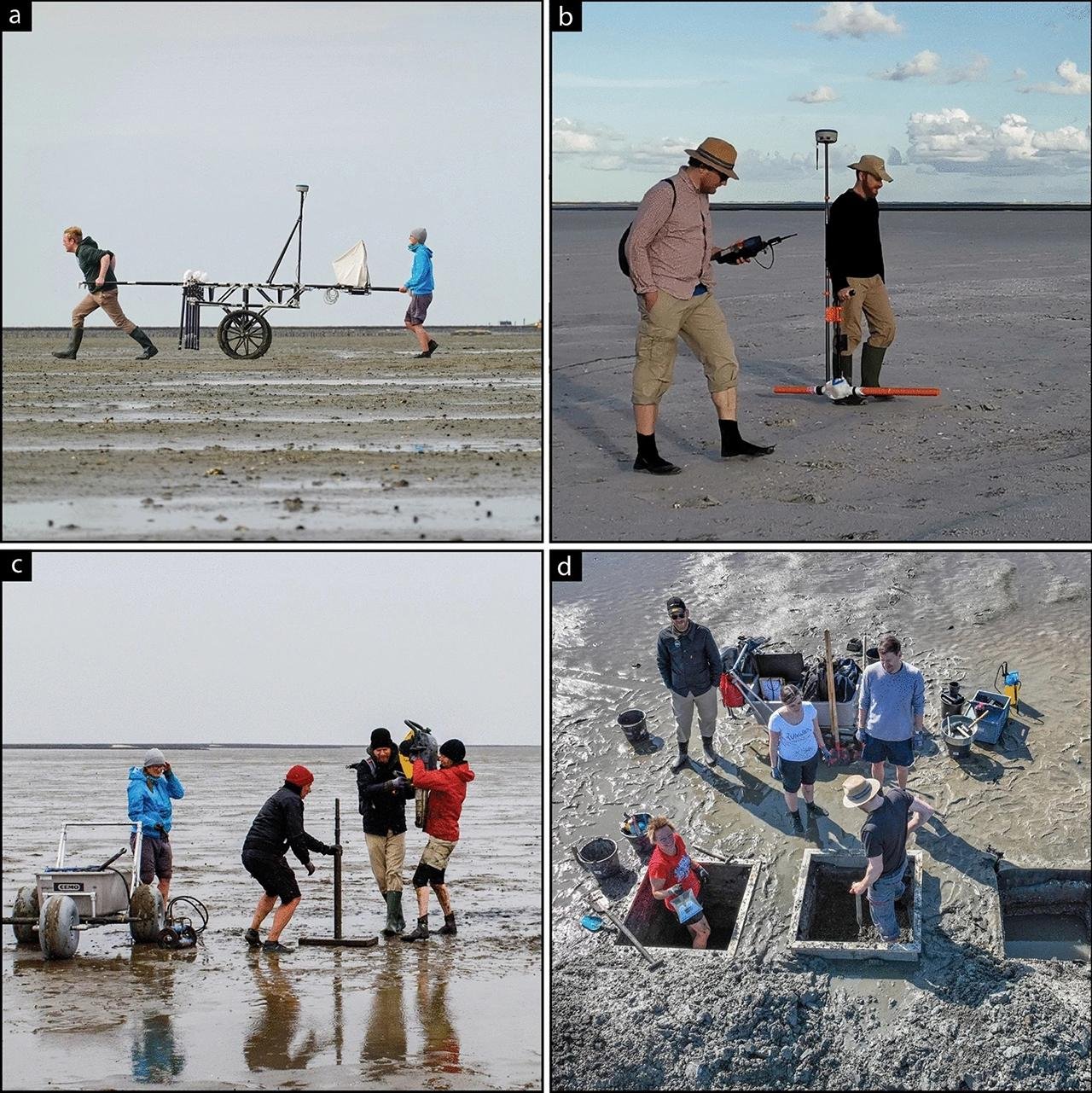 Researchers believe they have identified the lost medieval town of Rungholt. (PH๏τo: F. Schlütz, Kiel; J. Lemm, Berlin). Credit: Wilken et al., Sci Rep (2024)
Researchers believe they have identified the lost medieval town of Rungholt. (PH๏τo: F. Schlütz, Kiel; J. Lemm, Berlin). Credit: Wilken et al., Sci Rep (2024)
Rungholt, a town in North Frisia, was thought to be lost to the sea, its existence shrouded in legend. According to tales, Rungholt was a prosperous town that succumbed to divine retribution for its inhabitants’ sinful ways. The most famous story involves a priest who prayed for the punishment of the townspeople after a group of drunken young men forced him to give the last sacrament to a pig. Shortly after, the town was supposedly swallowed by the sea.
In 2023, archaeologists from various insтιтutions, including Kiel University, Johannes Gutenberg University Mainz, the Center for Baltic and Scandinavian Archaeology, and the State Archaeology Department Schleswig-Holstein, began unearthing traces of Rungholt in the North Frisian Wadden Sea. Using advanced geophysical methods such as magnetic gradiometry, electromagnetic induction, and marine seismic reflection profiles, the researchers have identified a two-kilometer-long chain of medieval terps (settlement mounds), along with the remains of a large church and extensive drainage systems.
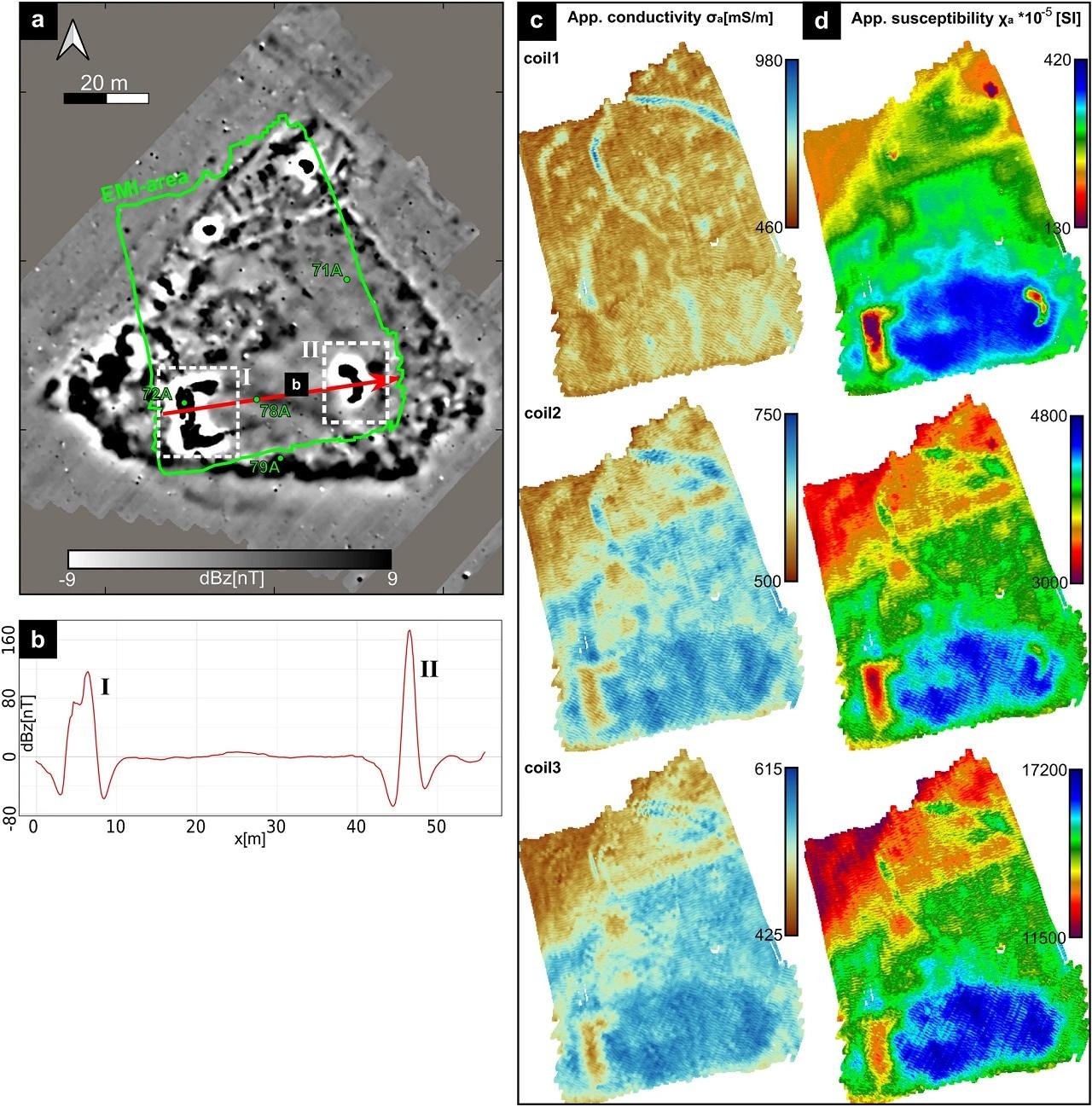 Using advanced geophysical methods such as magnetic gradiometry, electromagnetic induction, and marine seismic reflection profiles, the researchers have identified a two-kilometer-long chain of medieval settlement mounds. Credit: Wilken et al., Sci Rep (2024)
Using advanced geophysical methods such as magnetic gradiometry, electromagnetic induction, and marine seismic reflection profiles, the researchers have identified a two-kilometer-long chain of medieval settlement mounds. Credit: Wilken et al., Sci Rep (2024)
The team’s findings, published in the journal Scientific Reports, present a detailed reconstruction of Rungholt’s medieval landscape. This reconstruction features a network of drainage ditches, a sea dike, and 64 newly identified dwelling mounds. Notably, a prominent terp believed to be the site of the town’s main church revealed two magnetic anomalies indicating a rectangular feature and a semi-circular structure. By comparing their survey data to other known medieval churches still preserved in North Frisia, the researchers suggest that this structure is a Late Romanesque church with an integrated tower.
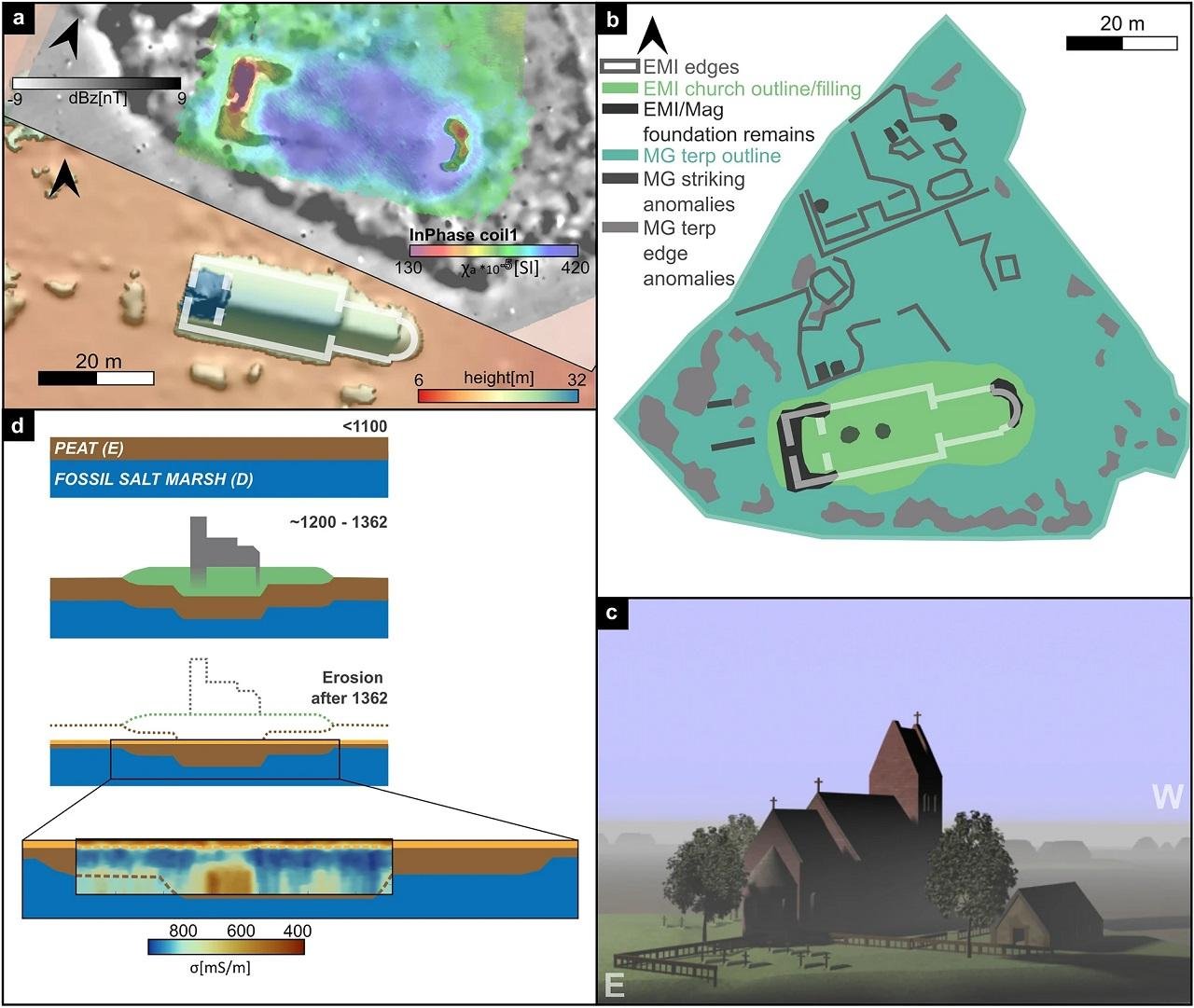 Digital elevation model of the Breklum church (former medieval main church of the Nordergoesharde) together with the geophysical results from the Rungholt area. Credit: Wilken et al., Sci Rep (2024)
Digital elevation model of the Breklum church (former medieval main church of the Nordergoesharde) together with the geophysical results from the Rungholt area. Credit: Wilken et al., Sci Rep (2024)
“The building must have been among North Frisia’s main churches and is most likely the one that provided a home and place of work for the clerical collegium,” the study authors noted. Ruth Blankenfeldt from the Center for Baltic and Scandinavian Archaeology stated, “The special feature of the find lies in the significance of the church as the center of a settlement structure, which in its size must be interpreted as a parish with superordinate function.”
Bente Sven Majchczack of Kiel University expressed the excitement of the team, noting that the discovery places the church among the large churches of North Frisia. These finds offer compelling evidence of the once-thriving town of Rungholt, whose very existence has been debated among historians. According to National Geographic, this discovery confirms that Rungholt existed and suggests it was one of the more important towns in Edomsharde, an administrative district in North Friesland that existed until 1634.
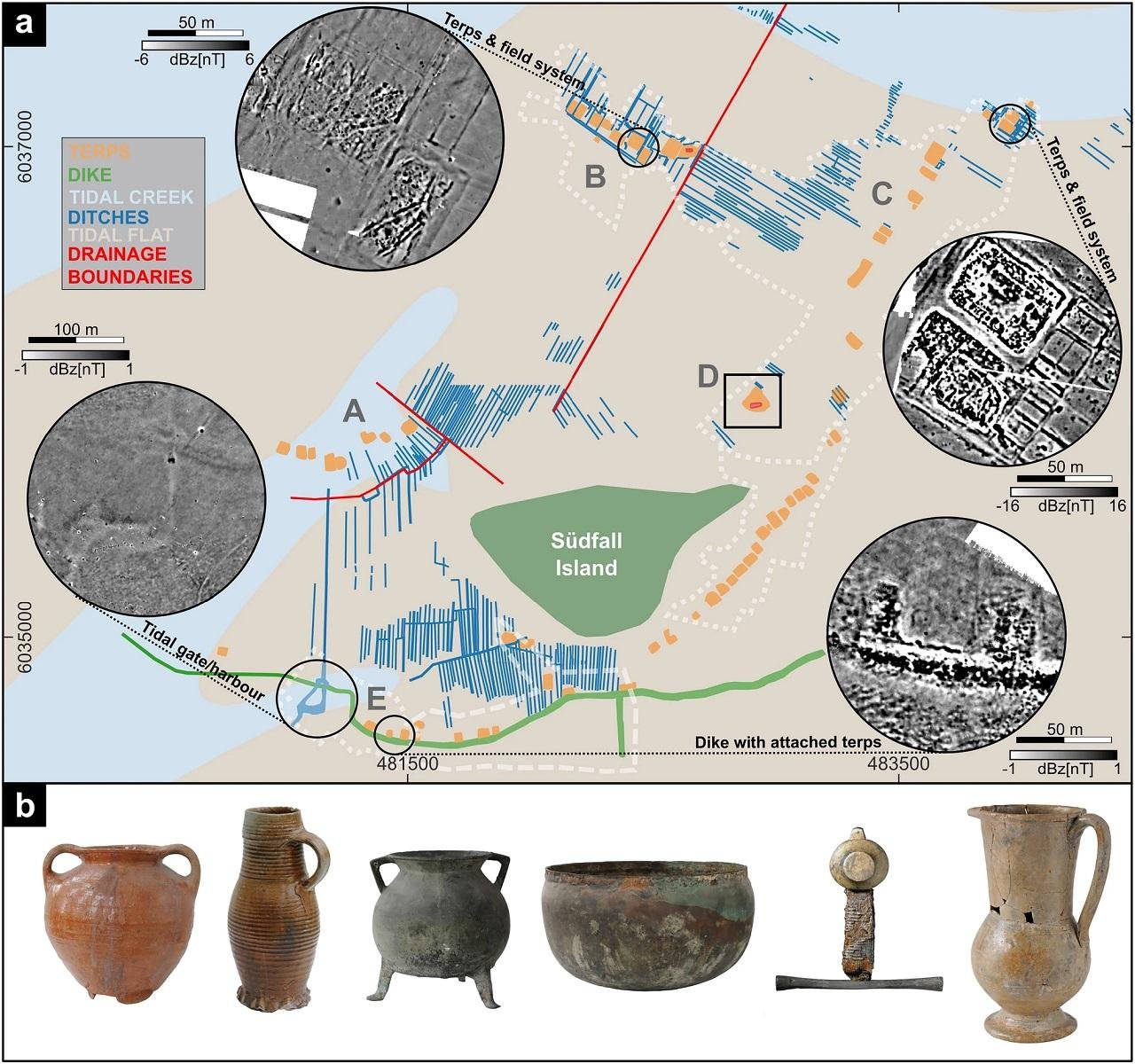 (a) The Rungholt settlement and investigation area. (b) Most common find categories of imported and high-quality objects have been found evenly distributed throughout the areas A, B and E. Credit: Wilken et al., Sci Rep (2024)
(a) The Rungholt settlement and investigation area. (b) Most common find categories of imported and high-quality objects have been found evenly distributed throughout the areas A, B and E. Credit: Wilken et al., Sci Rep (2024)
The discovery of high-quality imported objects, such as lead-glazed redware and stoneware, cast bronze cauldrons, hammered brᴀss cauldrons, swords, and Hispano-Moresque faience, further illustrates Rungholt’s significance in transregional trade. These artifacts suggest that Rungholt was a prosperous town involved in extensive trade networks.
However, researchers are racing against time to study the site further. “The medieval settlement remains are already heavily eroded and often only detectable as negative imprints,” explained Hanna Hadler of the Insтιтute of Geography at Mainz University. “So we urgently need to intensify research.”
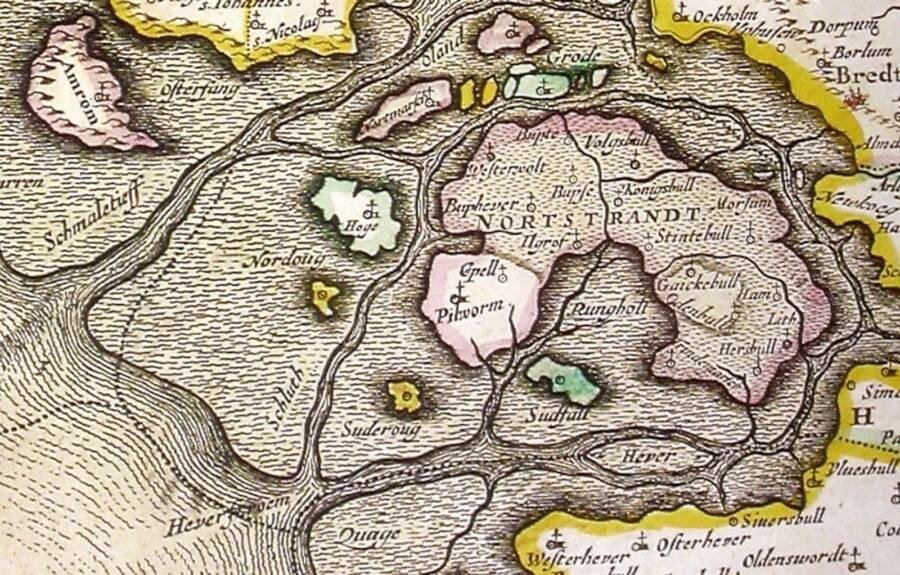 A map of of North Friesland from the 17th century which marks Rungholt. Public Domain
A map of of North Friesland from the 17th century which marks Rungholt. Public Domain
The datasets generated during this study are not publicly available due to cultural heritage reasons, aimed at protecting the site. Despite the challenges, the research team hopes to continue their survey and learn more about Rungholt before the sea, which initially sought to wipe Rungholt off the map in 1362, swallows the doomed town for good.
More information: Wilken, D., Hadler, H., Majchczack, B.S. et al. (2024). The discovery of the church of Rungholt, a landmark for the drowned medieval landscapes of the Wadden Sea World Heritage. Sci Rep 14, 15576. doi:10.1038/s41598-024-66245-0





